"If the railway is not safe, secure and reliable, then the Government’s investment of billions of pounds is pointless. We are at the centre of that.”
Chief Constable Paul Crowther, who has worked his way up from a British Transport Police constable over the past 34 years, sets out his stall. BTP has been his entire working life. His challenge since taking over the top job from Andy Trotter in May has been to make the world’s only national railway police force fully fit for purpose in a changing climate.
Crime has reduced on the railway for the tenth successive year. The rate for the most serious offences dropped by a further 6% in 2013-14, equating to 3,000 fewer crimes than the year before.
But the overall downward trend masks some serious issues. The number of sexual crimes committed rose sharply. The number of complaints against the police rose. Critically for train operators, the delays due to crime also rose. And those increases are set against a backdrop of cost-cutting and staff re-organisation.
So the Chief Constable sits down for a detailed discussion about his force’s challenges - the areas that must change if the BTP is to play its full part in the industry’s drive for efficiency, for fewer delays, and for costs to be kept under control.
BTP’s nondescript and uninspiring offices are in Camden in North London, beside a local branch of Sainsbury’s. Although tracks can be seen at a distance from the top floor windows, it is not an obvious location for a railway headquarters. “It’s cheap,” Crowther explains. “And we’ve just signed a new ten-year lease.”
He is five months into his five-year contract to lead the force. He gives lengthy, clear and thoughtful answers to questions, refreshingly free of glib media soundbites. Unusually for a senior officer, his comments are generally also devoid of police-speak, the inexplicably complex jargon-filled formal language that is often ingrained from the first days of form-filling out on the beat.
Perhaps that is because Crowther has become accomplished at justifying his decisions. Policemen have to answer to their Police and Crime Commissioner and to the Home Office. But BTP officers also have to explain themselves to the Transport Select Committee, Department for Transport and to the industry that pays the bills - and the latter needs to see what it is getting for its money. He gets plenty of practice at this.
“Every year we carry out a detailed assessment of the policing challenges ahead. We looked at crime rates, at social and demographic changes, and we looked at the growth in passenger numbers.
“We looked at the way we were configured to meet those challenges. We needed to restructure. By reducing support infrastructure and management layers, we could release resources and budgets. We mirrored the industry’s geographical structure as best we could, so that individual train operators only deal with one part of BTP. That is similar to the way local police forces have relations with their local authorities.
“We are also doing a lot of work with the franchising team at the Department for Transport, under Peter Wilkinson. We are working on future franchising agreements so that we are aligned with the needs of the railway.”
BTP expects demands for its services to increase in line with a predicted rise in passenger numbers of 16%-20% by 2019.
It has cut 120 back-office staff. There are 36 fewer senior officers. Seven separate policing areas around the country have been reduced to three divisions. The £9 million saved has been reinvested in more frontline staff - an additional 208 officers.
BTP now has 2,931 officers and 1,853 other staff, including community support officers (PCSOs.) Its budget for the current year is £258m. Of that £205m is for main line policing and £53m is for London Underground.
“Each of the seven geographic areas used to be semi-autonomous, each with its own structure for intelligence, prosecutions, criminal justice,” Crowther explains.
“If you corral those back-office functions into bigger units, you deliver broadly the same service at cheaper cost, and arguably more efficiently and effectively.
“We think that means we can achieve a further 20% reduction in crime, a further 20% reduction in disruption caused by crime, and a further 10% improvement in passenger confidence.”
London-centric
The result is a force undeniably focused on London. Almost two-thirds of the staff are based there. Two-thirds of the money is spent there. And Crowther himself has spent his whole working life in the capital.
“It reflects where the demand is,” he says. “Sixty per cent of rail crime is in the South East. More than 60% of passenger journeys are in this area.”
Measured by the number of incidents per passenger, London Underground is more than three times safer than the main line network. There are 25 crimes per million passengers on the national rail network, and only eight crimes per million passengers on London Underground. Is that simply because BTP has concentrated its efforts in the capital?
“Transport for London and the Underground invest very heavily in policing, more so than the rest of the network. Network Rail is our biggest funder, but TfL is second. There are significantly more resources in London because TfL wants to pay for them.
“The Underground itself has been transformed in the last ten years. Stations are brightly lit, with pretty good CCTV, and they almost exclusively use ticket barriers.
“Look at the crimes which worry travellers most: knife-point robberies. We have reduced them by 83% in ten years. If you map robbery hot spots on the street and in the stations alongside, there is no correlation between them. The Tube stations have become oases of peace and serenity compared with the areas outside. That must be down to lighting, barriers, and station staff that people can turn to for help.”
A crime detection rate of 34% is broadly in line with other forces, says Crowther. The theft detection rate is only 7%, an area highlighted by the House of Commons Transport Select Committee as needing urgent action.
Crowther responds: “There has been a lot said on detection rates. I am more interested in stopping crimes happening in the first place. We have seen a 24% reduction in theft crimes on the Underground.”
Unlike most crime areas, the victim and the suspect on the railway are rarely known to each other before the incident. They are transient encounters, passing ships in the night. The suspect is quickly many miles away, making detection and detention more difficult.
Other police forces dealing with violent crime find that in most cases the victim knows the offender, whether the incidents are domestic, at work or in places of entertainment. For that reason, Crowther believes a detection rate of one in three compares favourably with other forces.
From the Chief Constable’s top-floor office window looking north from Camden, the London Overground can be seen on a brick viaduct. Formerly the North London Line was branded Silverlink, when it endured a rough image.
“It used to be a robbery hot-spot. It has been transformed. Some of that is down to us. But it is brighter, more welcoming with great CCTV - that’s a game-changer on the trains.
“We know from our work with offenders that they used to carry out robberies on trains because there were cameras on the platforms but not on the trains. Now there is high-quality CCTV on the open-plan trains, and that really contributes to safety and security. That line has become one of the most improved in the country, in terms of passenger confidence.”
Until recently, Crowther took the lead national policing policy-making role on CCTV cameras. Not surprisingly, he feels they play a big part in passengers’ sense of security.
“I’ve always described the UK as CCTV-rich. And the transport sector is CCTV-saturated. We have a CCTV hub in London that has access to 55,000 cameras. The challenge is how to deal with that effectively, and how to deal with public expectation - people think every event must be detectable instantly.”
Sex crime
Hundreds of millions of passenger journeys are made each year in complete safety. Last year there were almost 51,000 notifiable crimes (the more serious offences). That was a drop of 5.7% on the year before.
Within that, robberies reduced by 17%, as did theft of passenger property. Fraud was down by half.
But violence against people rose slightly. And sexual offences were up by a fifth, a stand-out figure completely against the general trend of other crime.
“If you look across the national crime figures, there has been a 20% rise in sexual offences. Ours are in line with that,” says Crowther.
“It’s widely accepted that the recent high-profile celebrity cases have brought greater awareness, and people are now more confident about reporting these offences.
“We launched Project Guardian in April 2013. We have done a lot of analysis with TfL, the Met and City of London Police, looking at incidents of sexual offences on the transport system. Some were crimes - sex assaults, touching. Others were passengers telling us about inappropriate comments, being leered at, feeling harassed by people around them. Fifteen per cent of women said they had experienced some form of unwanted sexual behaviour. Putting men and women together, the figure was 9%.
“A major part of Project Guardian was to increase reporting. So it is not surprising that is what has happened - it’s what we set out to do.
“Now we have more plain clothes officers, greater use of CCTV, and we are going after the offenders. We’ve dealt with 22% more offenders in the same period, so we largely reflect national trends and priorities.”
Complaints
In the past year there has been a rise both in the number of complaints made against BTP and in the proportion of those complaints upheld following investigation.
Some 448 formal complaints were made by members of the public - 100 more than the previous year. The majority were dismissed or resolved locally, but 85 complaints were upheld and the police found to be in the wrong.
Crowther thinks that is mainly because the public have been encouraged to come forward to complain, and because the process of making a complaint has been made easier.
Among the many positive performance indicators, time lost as a result of cable theft is down by three-quarters compared with six years ago - a real achievement.
But staff sickness has remained stubbornly high. A BTP officer takes, on average, more than seven days off sick each year.
“I think it’s still awfully high,” admits Crowther. “If you compare us with industry, we are pretty favourable. But remember ours is a contact sport. Our people are stepping into situations that others are moving away from. Some sickness is caused by injuries, assaults and so on. My staff will tell you we are very tough on sickness.”
Delays
After a substantial reduction in the time lost on the railway due to crime in 2012-13, the trend reversed last year. The number of lost minutes increased by 6%. For the industry, that represents millions of pounds of additional cost.
“Primary delays” are calculated as the minutes lost by a train due to an incident directly affecting that train. The increase last year was 4%. “Reactionary delays” are based on the number of minutes that other trains are delayed as a result of the original incident. That rose by 8%. The delays due to trespass and vandalism were up by 12%.
“This is something we are determined to do more about,” says Crowther. “First and foremost, we protect the public. But we give ourselves KPIs for reducing disruption. Other police forces would think this is mad, because what we do is inevitably disruptive. We have been very ambitious in saying that we will contribute to reducing overall disruption.
“The latest figures are slightly more encouraging - in the year to date, primary delay is now just down by half of 1%. So we are bearing down on the stuff we can directly influence.
“What we can’t influence is some of the reactionary delay. If it takes time to get a relief driver along after an incident, we cannot do much about it. But we now have some interesting hot spot analysis that tells us where disruption is happening. We split that into high frequency but low-impact locations, which tend to be down to trespassing, where the delay impact may not be large. And low frequency but massive-impact locations. That is where we have been directing our patrols and prevention activity.
“Tackling this is within our collective gift. If we identify a high-impact location, we ought to put a moat full of crocodiles around it, so no one gets near. The game-changer is direct action by the industry once we have identified that spot, putting engineering and management solutions into that location.”
Terrorism
A recent study by the House of Commons Transport Select Committee praised the BTP’s proven approach to terrorism, honed over several decades.
Crowther knows the arguments well. He was the area commander on the day of the July 7 bombings in 2005, a series of co-ordinated suicide attacks. Have the processes evolved to deal with the latest heightened state of security alert, following events in Syria and Iraq?
“We all hold a big responsibility to make it as difficult as possible for those outrages to take place, notwithstanding that this is an open network. All of our people all the time have a brief that they are trying to spot attack planning. They are looking for suspicious activity, looking to disrupt anyone carrying out reconnaissance. We obviously have some specialist resources, too.
“With the heightened threat, there’s a lot to be done around visibility of our officers and resources to deter an attack. We have upped the number of armed patrols.”
Firearms training has been taken in-house, rather than hiring other police forces. Crowther says it is cheaper for the BTP to use its own firearms officers as trainers. He does not say how many officers routinely carry weapons.
“We have seen an increase in bomb threats. We are still assessing 20 to 30 bomb threats to the railway every month. We apply a very sophisticated analysis to those threats. Over the last ten years, despite hundreds of bomb threats, we have not once recommended that the railway has closed.
“We know that the cost of closing a major hub is about £2m a time. So every time we assess a threat, we know we can save the industry lots of money and save the public lots of disruption. We need access to all the advice, the security agencies, the intelligence that enables us to make those decisions.”
Is the terrorism threat on the railway as London-centric as the policing? Crowther says much of it is, because the biggest crowds and the most obvious targets are in the capital. But looking at the pattern of terrorist attacks over the last century, he says there are more incidents on the transport network than anywhere else.
“In many ways, the more target-hardened London is, the greater the temptation for people intent on doing this sort of thing to move outside London.”
Suicides
The railway remains extremely sensitive about the issue of suicides. In the wake of economic recession, the number of people choosing to end their lives under a train has increased sharply.
Train operators are unwilling to discuss the subject, fearing increased awareness will further encourage suicides. But Network Rail has had notable success in the last year and its work with the Samaritans has been widely praised.
Crowther leads police work nationally on suicide prevention. It’s a subject he believes would benefit from greater sensitive public debate, although he concedes it remains difficult and complex. It is in this area that he becomes most animated, enthusiastic and demonstrative.
“We do a great deal of analysis. We look at the distribution of fatalities. We look at where people live and where the incidents take place - how far they travel to kill themselves.
“In London, Ealing has a high suicide incidence. There is over-representation of a particular cultural group there, and most people who take their own lives in Ealing also live locally.
“Contrast that with Camden and Islington NHS Foundation Trust area - the highest level of sectioning under the Mental Health Act in the UK. The average distance travelled for a suicide is 65 miles, but in Camden and Islington it is 165 miles. This is a catchment area that includes Euston, King’s Cross and St Pancras.
“There was an inward health problem from people who were not local. And nothing was being done about it. It was a “light bulb” moment. The NHS, Network Rail and London Underground gave us some money. We set up a street triage project, with mental health nurses now working alongside police officers.
“The result: across the force we’ve seen a 10% rise in suicides during the pilot period. In the area where we are doing street triage, we’re seeing a 14% reduction. This is groundbreaking stuff. And besides our obvious desire to save a life, we know how much it costs the railway in time and money each time there is a fatality.”
Crowther explains that his intelligence unit searches fatalities through social media sites, including checking contacts on Facebook. By reading the comments on the pages of people who have been bereaved, they have identified what he calls a “tribute element” by others who may attempt similar suicide at the same location. They then put these vulnerable people in touch with doctors, mental health teams and the Samaritans.
“We may not always be visible on this, but our tentacles are out there, doing really innovative things.”
“Our response units in north London each attend about 12 fatalities a year, and these are very unpleasant for our staff to deal with. There is a danger of sounding clichéd here, but I see how we make a difference. We are genuinely saving two or three lives every day. My people go onto the tracks, and they drag people off before a train mows them down. Every day.
“I’m waiting to talk to some officers now. The night before last was the latest in many incidents where someone had climbed the parapet of a road bridge to jump. Two officers managed to grab the person as they jumped, holding them for ten minutes, literally holding them, until more help arrived.
“No one wants to talk about this - there is definitely a fear of contagion. You get more people choosing the same location, and nobody wants to take that risk. But it is an issue and we need to talk about it, to get all the right public bodies coming together to deal with it.”
What makes Paul Crowther tick?
Each time he is asked for his own opinion, or prodded for a personal perspective, Paul Crowther sidesteps the opportunity.
Crowther the policeman offers a professional view. Crowther the Chief Constable speaks for his team. Paul, the 53-year-old private individual with a strong London accent, gives nothing away. But he is clearly deeply committed to his employer of the past three and a half decades.
“I’m passionate about this very special organisation that delivers a special type of policing. We are different from other police forces. We have a very strong commercial bent to the things we do, which other forces just wouldn’t even think of doing. I’m very proud of that. “We are introducing some innovative and different things. We keep the network running. That is hugely satisfying.”

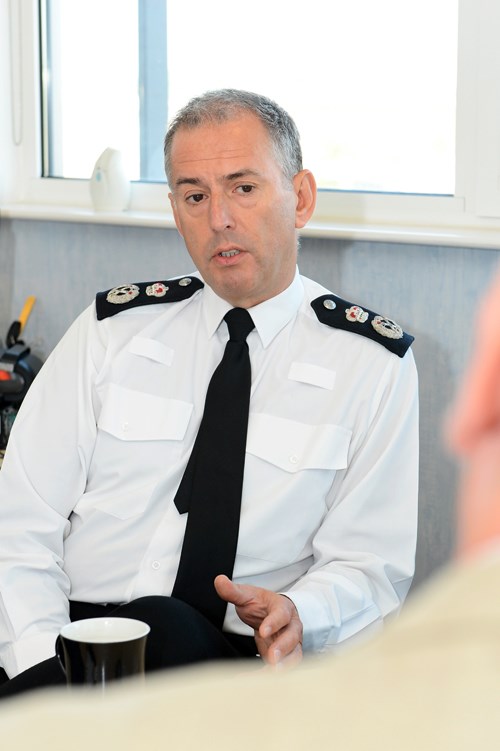
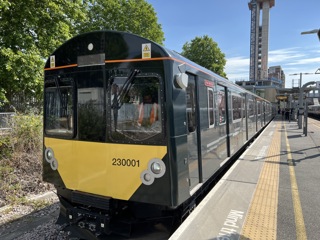
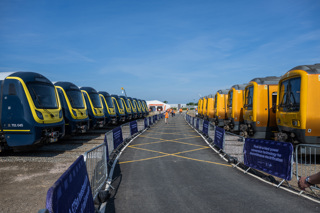
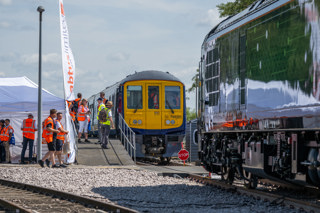

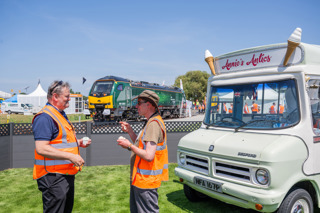











Login to comment
Comments
No comments have been made yet.